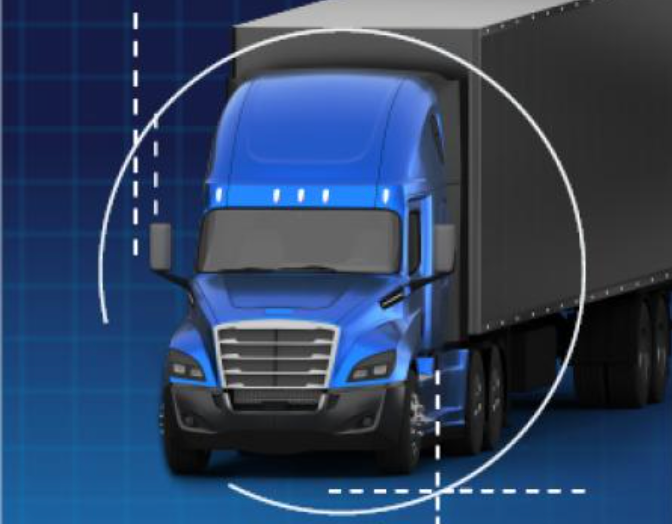Editor’s Note: Not every driver enjoyed the benefit of having a parent or grandparent who was a trucker and gladly shared the wisdom of the road they amassed over the years and the miles. And, honestly, not every driver — new or behind the wheel for even several years — has been told many of the ins and outs of driving and life on the road. Our feature, Trucking 101, means to provide some of that information and answer some questions that may be on the minds of some truckers.
___
The Federal Motor Carrier Safety Administration urges truckers and others to focus on safe driving techniques as the number of vehicles on the nation’s highways expands during the summer vacation travel season following 2020’s COVID-19 slowdown.
“We depend on trucks to keep our stores supplied with food and medicine, and commercial buses to transport our loved ones safely,” said FMCSA Deputy Administrator Meera Joshi. “We urge truck drivers and bus operators to be extra alert for those on foot and bike, and we urge drivers, motorcyclists, people walking, riding scooters or bicycles to give large trucks and buses extra space to maneuver.”
Joshi also said commercial truck drivers have responsibilities to operate safely and courteously, to obey speed and other traffic signage, and to be fully compliant with all federal and state safety rules.
 “These regulations exist to help protect commercial operators – as well as all other roadway travelers,” she said.
“These regulations exist to help protect commercial operators – as well as all other roadway travelers,” she said.
The Our Roads, Our Safety campaign is a national partnership program led by FMCSA and designed to continually reach a broader audience with updated safety information resources, including videos, infographics, tip sheets, and other materials all freely available for use and distribution.
Because it’s never too early to learn about roadway safety, this year the Our Roads, Our Safety campaign is also launching an interactive web game where children can test their knowledge of large truck and bus safety with fun quizzes and challenges.
RELATED NEWS: Trucking 101: Don’t get in your truck without these apps on your smartphone
While the Our Roads, Our Safety outreach efforts will be conducted nationwide, there will be a heightened emphasis across 10 states – California, Florida, Georgia, Illinois, Indiana, North Carolina, Ohio, Pennsylvania, Tennessee, and Texas – that have the highest number of fatal crashes involving large trucks and buses.
FMCSA also offers these nine tips to commercial vehicle drivers:
1. Defense! Defense!
Commercial drivers have to be constantly vigilant to detect unexpected road conditions, distracted drivers, and motorists who don’t understand how commercial vehicles operate.
Scan ahead about 15 seconds (a quarter mile on interstates, or one to two blocks in cities) for traffic issues, work zones, and other dangers.
Check mirrors every 8-10 seconds to be aware of vehicles entering your blind spots.
2. Signal for Safety
Signal and brake to give other drivers plenty of time to notice your intent.
If you must pull off the road, use flashers, reflective triangles, and road flares to alert approaching drivers.
3. Know When to Slow
Driving too fast for weather or road conditions or failing to slow down for curves or ramps create risks for spills and rollovers, as well as crashes.
4. Maintain Your Vehicle
Make sure that pre-trip safety inspections are completed particularly for tires and brakes. Your life depends on them. Make sure your load is well balanced and secure, as a shifting load can cause a rollover or loss of control. Loose materials create road hazards.
5. Buckle Up
Use your safety belt every time. Safety belts save lives, reduce injuries, and allow drivers to stay inside and in control of their vehicles in case of a crash. In 2014, 30% of truck drivers involved in fatal crashes were partially or totally ejected from their vehicles.
6. Stay Sharp
Get enough rest; don’t drive when you’re fatigued, too ill to focus, or on medications (including over-the-counter medicine) that make you drowsy or dizzy.
7. Get the Right Trip Planning Info
Stay up to date on weather and road conditions, detours, and mountainous routes in order to plan driving time.
Be aware that non-commercial navigation systems and apps may not provide warnings of height and weight limitations and other commercial vehicle restrictions.
8. Practice Work Zone Safety
Work zones present many hazards, like lane shifts, sudden stops, uneven road surfaces, moving workers and equipment, and confused passenger vehicle drivers. In 2016, 27% of fatal work zone crashes involved at least one large truck compared to only 11% of all fatal crashes – so it’s vital to take work zone safety seriously.
Slow down, maintain extra following space, and to be prepared to stop.
Obey all work zone signs and signals.
Scan ahead for changing traffic patterns, and be alert to vehicles entering your blind spots.
Keep a sharp eye out for road workers and flag crews.
9. Never Drive Distracted
Texting is among the worst driving distractions. The odds of being involved in a crash, near-crash, or unintentional lane deviation are 23.2 times greater for truck and bus drivers who are texting while driving.
Research shows that drivers texting while driving took their eyes off the forward road for 4.6 seconds on average. At 55 mph, this equates to traveling 371 feet (more than the length of a football field) without looking at the road.
It is illegal for a commercial driver to text while driving, and there are restrictions on using mobile phones (devices must be hands-free, and dialed using no more than one button).
Eating, drinking, interacting with a navigational device, map reading, controlling a pet, or any other activity that takes focus off the road can also be a deadly distraction.
If you must attend to an activity other than driving, get off at the next exit or pullover – it’s not worth the risk.
